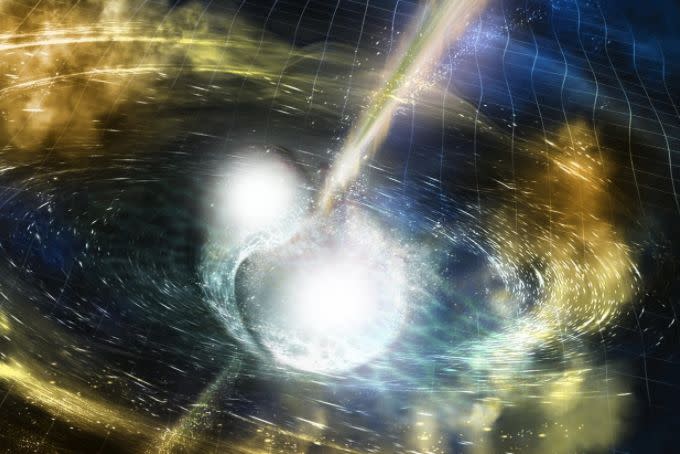In A First, Scientists Spot Light Amid Gravitational Waves Emitted By Colliding Stars
Scientists for the first time have detected both gravitational waves and light from the collision of two dead, incredibly dense neutron stars.
Monday’s announcement by American and European scientists, marked with news conferences and the publication of dozens of research papers, represents another huge leap forward in our understanding of the universe.
The neutron star collision also formed a number of other heavy elements like gold, platinum and lead, confirming decades of speculation regarding their origin.
While detectors in Louisiana, Washington and Italy registered the gravitational waves on Aug. 17, the collision itself happened about 130 million years ago. Researchers recorded a large burst of gamma rays from the same source, two seconds after the gravitational waves.
Albert Einstein predicted the existence of gravitational waves in 1916, but it wasn’t until 2016 that scientists were actually able to detect them and confirm their existence.

“Imagine that gravitational waves are like thunder,” astronomer Philip Cowperthwaite, of the Harvard-Smithsonian Center for Astrophysics, said in a statement. “We’ve heard this thunder before, but this is the first time we’ve also been able to see the lightning.”
Unlike the 2016 detection of gravitational waves, which originated from the collision of black holes and was relatively brief, these new waves resulted from neutron stars. While black holes are so dense that light itself can’t escape, neutron stars are not, thus explaining the surprising amount of energy in the August event.
Though not quite as dense as a black hole, neutron stars are still astoundingly dense: A teaspoon-full of neutron star has a mass of around 10 billion tons.
“Previously detected black-hole mergers lasted for a second, maybe two seconds,” Mansi Kasliwal of the California Institute of Technology in Pasadena told Space.com. “This latest event lasted nearly a whole minute.”
“Its energy was enough to outshine the 100 billion stars in our galaxy by about a billion-fold for the 50 or so seconds it took place,” said Kasliwal, who participated in the research.
A massive number of scientists collaborated on the research. According a CNN report, just one of the papers published on Monday had a list of thousands of coauthors, representing approximately 35 percent of the global astronomy community.
Love HuffPost? Become a founding member of HuffPost Plus today.
This article originally appeared on HuffPost.

